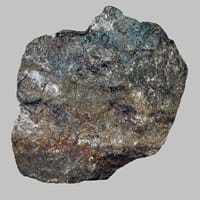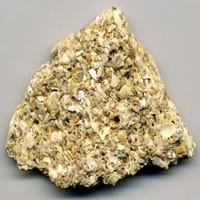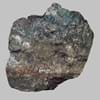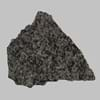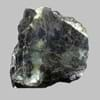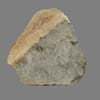Definition
Monzonite is a granular igneous rock with composition between syenite and diorite and containing approximately equal amounts of orthoclase and plagioclase
Coquina is a sedimentary rock that is composed either wholly or almost entirely of the transported, abraded, and mechanically-sorted fragments of the shells of molluscs, trilobites, brachiopods, or other invertebrates
Origin
Trento Province, Italy
European Foreland Basins
Discoverer
Unknown
Unknown
Etymology
From Mount Monzoni in the Tyrol, Italy, + -ite1
From Concha (Latin)+ Coquina(Spanish) +conch(English)= Couquina (mid 19th century)
Class
Igneous Rocks
Sedimentary Rocks
Sub-Class
Durable Rock, Hard Rock
Durable Rock, Soft Rock
Group
Plutonic
Not Applicable
Other Categories
Coarse Grained Rock, Fine Grained Rock, Medium Grained Rock, Opaque Rock
Coarse Grained Rock, Opaque Rock
Texture
Phaneritic
Clastic
Color
Black, Brown, Light to Dark Grey, White
Beige, Buff, Orange
Durability
Durable
Non-Durable
Appearance
Shiny
Layered, Banded, Veined and Shiny
Interior Uses
Decorative Aggregates, Flooring, Interior Decoration
Decorative Aggregates, Homes, Hotels, Interior Decoration
Exterior Uses
As Building Stone, As Facing Stone, Office Buildings, Paving Stone
Garden Decoration, Office Buildings
Other Architectural Uses
Curbing
Curbing
Construction Industry
As Dimension Stone, Cement Manufacture, Construction Aggregate, for Road Aggregate
Building houses or walls, Construction Aggregate
Medical Industry
Not Yet Used
Not Yet Used
Antiquity Uses
Artifacts, Monuments, Sculpture
Artifacts, Monuments, Sculpture, Small Figurines
Commercial Uses
Creating Artwork
Creating Artwork
Types
Quartz Monzonite, Mangerite, Syenite and Diorite
Not Available
Features
Available in lots of colors, Is one of the oldest rock
Available in Lots of Colors and Patterns, Is one of the oldest rock
Archaeological Significance
Famous Monuments
Data Not Available
Data Not Available
Famous Sculptures
Data Not Available
Data Not Available
Pictographs
Not Used
Used
Petroglyphs
Not Used
Used
Formation
Monzonite is a fine-grained, hard rock which is a type of metasomatite, essentially altered basalt. It forms with or without crystallization, either below the surface as intrusive rocks or on the surface as extrusive rocks.
Coquina is a sedimentary rock which is formed when billions of small clam-like seashell, called Coquina, or cockleshell are die and hence are deposited, buried and turns into a rock when pressure is applied.
Mineral Content
Albite, Amphibole, Apatite, Biotite, Feldspar, Hornblade, Ilmenite, Magnetite, Muscovite or Illite, Olivine, Plagioclase, Pyroxene, Quartz, Sulfides, Titanite, Zircon
Apatite, Augite, Bronzite, Calcite, Chert, Chlorite, Clay Minerals, Epidote, Feldspar, Garnet, Micas, Muscovite or Illite
Compound Content
Aluminium Oxide, CaO, Iron(III) Oxide, FeO, Potassium Oxide, MgO, MnO, Sodium Oxide, Phosphorus Pentoxide, Silicon Dioxide, Titanium Dioxide
CaO, Carbon Dioxide, Iron(III) Oxide, MgO
Types of Metamorphism
Burial Metamorphism, Cataclastic Metamorphism, Impact Metamorphism
Not Applicable
Types of Weathering
Biological Weathering
Biological Weathering, Chemical Weathering, Mechanical Weathering
Types of Erosion
Chemical Erosion, Coastal Erosion, Glacier Erosion, Water Erosion
Coastal Erosion, Sea Erosion, Water Erosion, Wind Erosion
Grain Size
Medium to Fine Coarse Grained
Coarse Grained
Fracture
Not Available
Irregular
Porosity
Less Porous
Highly Porous
Luster
Subvitreous to Dull
Dull to Vitreous to Submetallic
Compressive Strength
Not Available
Cleavage
Not Available
Not Available
Toughness
Not Available
Not Available
Specific Gravity
2.8-3
1.10-2.24
Transparency
Opaque
Opaque
Density
2.9-2.91 g/cm3
2.8-2.9 g/cm3
Specific Heat Capacity
Not Available
Resistance
Heat Resistant, Impact Resistant, Pressure Resistant
Heat Resistant, Impact Resistant, Pressure Resistant, Wear Resistant
Deposits in Eastern Continents
Asia
China, India, Iran, Saudi Arabia, Sri Lanka, Taiwan, Thailand, Turkey, Vietnam
Not Yet Found
Africa
Angola, Egypt, Ethiopia, Madagascar, Namibia, Nigeria, South Africa
Not Yet Found
Europe
Bulgaria, England, Germany, Norway, Romania, Switzerland
United Kingdom
Others
Not Yet Found
Not Yet Found
Deposits in Western Continents
South America
Argentina, Bolivia, Brazil, Chile, Colombia, Ecuador, Peru
Not Yet Found
Deposits in Oceania Continent
Australia
New South Wales, New Zealand, Queensland, South Australia, Western Australia
Not Yet Found
Monzonite vs Coquina Characteristics
Though some rocks look identical, they have certain characteristics which distinguish them from others. Characteristics of rocks include texture, appearance, color, fracture, streak, hardness etc. Monzonite vs Coquina characteristics assist us to distinguish and recognize rocks. Also you can check about Properties of Monzonite and Properties of Coquina. Learn more about Monzonite vs Coquina in the next section. The interior uses of Monzonite include Decorative aggregates, Flooring and Interior decoration whereas the interior uses of Coquina include Decorative aggregates, Homes, Hotels and Interior decoration. Due to some exceptional properties of Monzonite and Coquina, they have various applications in construction industry. The uses of Monzonite in construction industry include As dimension stone, Cement manufacture, Construction aggregate, For road aggregate and that of Coquina include Building houses or walls, Construction aggregate.
More about Monzonite and Coquina
Here you can know more about Monzonite and Coquina. The life cycle of a rock consists of formation of rock, composition of rock and transformation of rock. The composition of Monzonite and Coquina consists of mineral content and compound content. The mineral content of Monzonite includes Albite, Amphibole, Apatite, Biotite, Feldspar, Hornblade, Ilmenite, Magnetite, Muscovite or Illite, Olivine, Plagioclase, Pyroxene, Quartz, Sulfides, Titanite, Zircon and mineral content of Coquina includes Apatite, Augite, Bronzite, Calcite, Chert, Chlorite, Clay Minerals, Epidote, Feldspar, Garnet, Micas, Muscovite or Illite. You can also check out the list of all Igneous Rocks. When we have to compare Monzonite vs Coquina, the texture, color and appearance plays an important role in determining the type of rock. Monzonite is available in black, brown, light to dark grey, white colors whereas, Coquina is available in beige, buff, orange colors. Appearance of Monzonite is Shiny and that of Coquina is Layered, Banded, Veined and Shiny. Properties of rock is another aspect for Monzonite vs Coquina. The hardness of Monzonite is 6-7 and that of Coquina is 1-2. The types of Monzonite are Quartz Monzonite, Mangerite, Syenite and Diorite whereas types of Coquina are Not Available. Streak of rock is the color of powder produced when it is dragged across an unweathered surface. The streak of Monzonite and Coquina is white. The specific heat capacity of Monzonite is 0.92 kJ/Kg K and that of Coquina is Not Available. Depending on the properties like hardness, toughness, specific heat capacity, porosity etc., rocks are resistant to heat, wear, impact, etc.Monzonite is heat resistant, impact resistant, pressure resistant whereas Coquina is heat resistant, impact resistant, pressure resistant, wear resistant.
